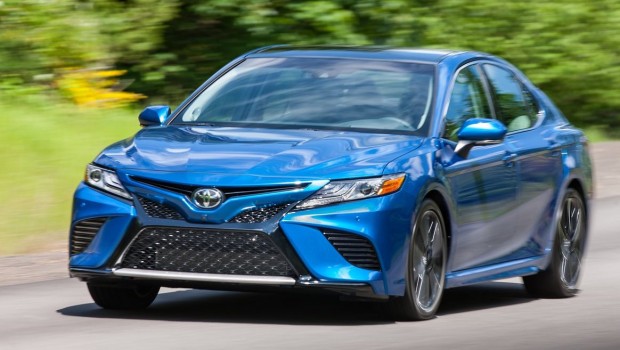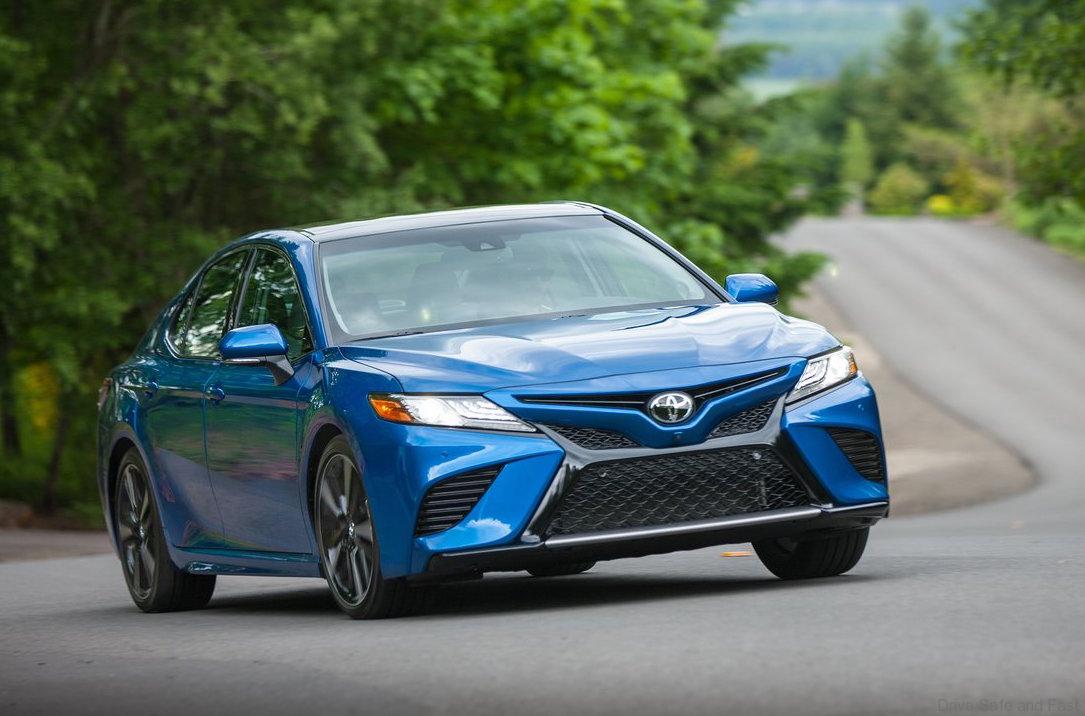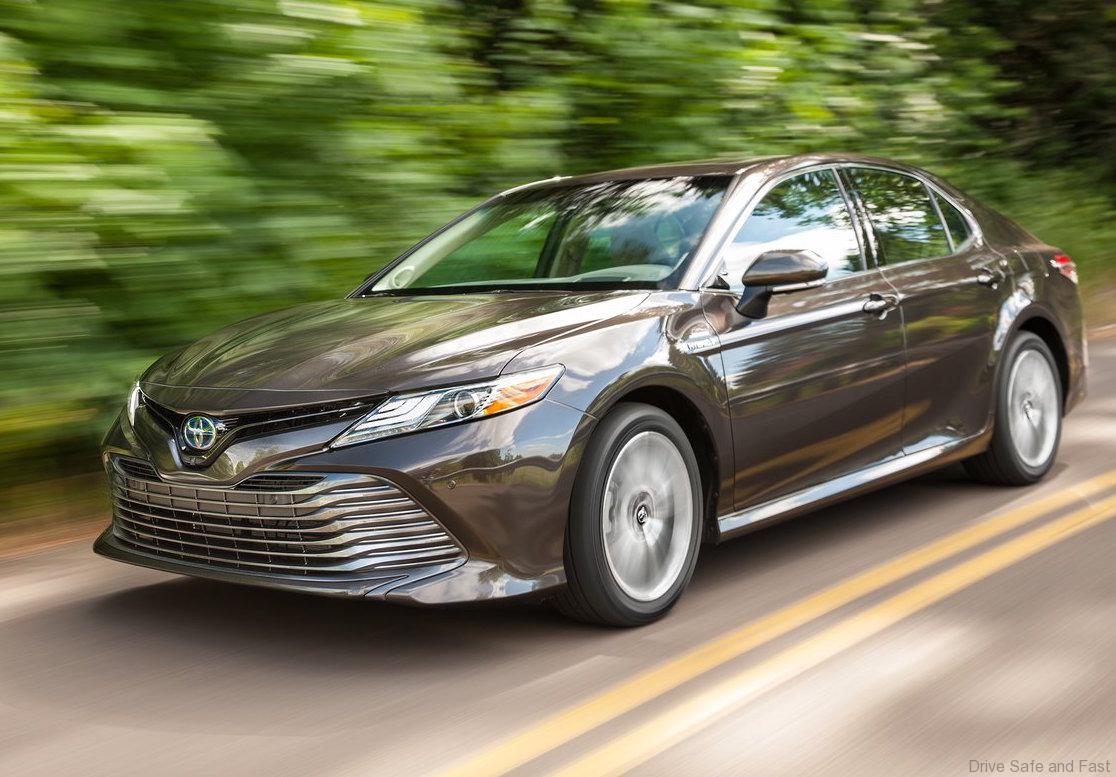Toyota explains the all new CAMRY Hybrid System
Sold in more than 100 countries, the Toyota Camry is the segment leader in many global markets where it is available. Introduced in Japan in 1982, the Camry was Toyota’s first mass-produced vehicle with a transverse engine layout. Its welcomed combination of affordability with superior packaging, quality and engineering was a revolutionary concept, allowing the Camry to distinguish itself from other. One could say it was a pioneer in establishing the Midsize-sedan segment. In the following years, the Camry became a sales success everywhere it was sold. Today, Camry remains a key model in the Toyota lineup and is manufactured in multiple plants around the globe, with total sales surpassing 18 million units.
Like the new Toyota Camry’s conventional gasoline powertrain, the new Toyota Hybrid System (THS II) has been engineered to provide spirited performance and driving enjoyment-including new Sequential Shiftmatic technology that allows the driver to “shift” the continuously-variable transmission (CVT), mimicking a quick-shifting six-speed automatic transmission via paddle shifters (on SE grade) or with the console-mounted shift lever-while simultaneously achieving an optimal balance between high power output and exemplary energy efficiency.
The 2018 Camry Hybrid is available in three grades, LE, SE, and XLE. In addition to its enhanced handling and driving performance, the hybrid version of the new Camry achieves outstanding fuel efficiency with a best-in-class EPA-estimated mpg of 51 city/ 53 highway/52 combined on the LE grade, an impressive 30 percent increase for combined mpg, and 44 city/47 highway/46 combined on the SE and XLE, reflecting an increase of 21% for combined mpg.
Dynamic performance is assured thanks to optimal control of the engine working in concert with the electric motor (MG2), while exemplary energy efficiency is achieved by using both electric motors (MG1 and MG2) for hybrid battery charging.
Driving characteristics and trunk room are improved through the implementation of the new TNGA packaging as it allows for the hybrid system’s battery pack to be moved from the trunk area to beneath the rear seat, positioning the battery weight at a lower center of gravity axis.
The updated Power Control Unit (PCU) of the new hybrid system plays a key role in improving the operational efficiency of this eco-sensitive powertrain.
Thanks to improvements in the conversion efficiency of the PCU and the transaxle/electric motor, they combine to reduce energy loss by a total of approximately 20%. Additionally, improvements to cooling system efficiency has reduced energy loss by about 10%.
Just like the Prius, the PCU is lighter and more compact as a result of integrating microcontrollers and using a new power stack structure, allowing the unit to be packaged directly above the transaxle. This new design lowers the vehicle’s overall center of mass and allows for a lower hood height.
Another key change to the PCU is a revised DC-DC converter (converts a source of direct current from one voltage level to another) that sees its control output optimized – – including the conversion to AC power helping to reduce the vehicle’s overall power consumption. What’s more, the output filter for the DC-DC converter has been redesigned so that it is more dimensionally compact (improved packaging/weight savings) and produces less noise (reduced NVH).
The 2018 Camry Hybrid is equipped with a Lithium-ion (Li-Ion) battery pack on the LE grade and Nickel-Metal Hydride (Ni-MH) battery pack on the SE and XLE.
Along with the traditional Camry Hybrid system drive modes of NORMAL, ECO and EV, a new SPORT drive mode setting has been added that allows for an increase in power from the hybrid system for improved acceleration response relative to pedal input. The NORMAL, ECO, and SPORT modes can each be used while EV mode is activated.
The Toyota Camry Hybrid also features the new Auto Glide Control (AGC), which helps to improve fuel efficiency by calculating an efficient coasting logic. When driving normally, engine braking will slow the vehicle down when the driver lifts off from the accelerator pedal. However, to avoid aggressive engine braking, AGC limits the loss of vehicle speed through an automatic drive setting that acts more like a neutral gear, allowing the vehicle to coast to the stoplight.
An AGC indicator light is illuminated on the Multi-Information Display (MID) when AGC is in operation to alert the driver that less deceleration torque than normal is currently being used. Of note, AGC can only be activated when the vehicle is being operated in the ECO drive mode setting.
Vastly Superior Driving Dynamics
While in the throes of development, the Camry’s engineering team had a huge challenge on their collective to-do list: Create a soul-stirring sedan possessing enhanced, praise-worthy driving dynamics.
At the foundation of the Toyota Camry’s sporty handling and enhanced ride quality is its high-strength body/platform structure. Through the increased use of ultra-high-tensile steel and the application of a new molding technology it delivers enhanced structural rigidity.
Further aiding performance is an innovative new double wishbone rear suspension system that imbues the chassis with responsive handling and precise steering control while simultaneously delivering ride quality on par with premium luxury vehicles. A new four-point engine mounting system adds to the vehicle’s civil road manners as it greatly reduces unwanted noise, vibration and harshness (NVH) from permeating into the passenger compartment.
Toyota Safety
Among the many features on the 2018 Camry is the standard Toyota Safety Sense™ P (TSS-P) suite of safety systems and technologies that is helping to make gradual progress towards Toyota Motor Corporation’s ultimate goal of “zero casualties from accidents.” This multi-feature advanced active safety suite bundles cutting edge active safety technologies including Pre-Collision System with Pedestrian Detection (PCS w/PD), Dynamic Radar Cruise Control (DRCC), Lane Departure Alert with Steering Assist (LDA w/SA); and Automatic High Beams (AHB). Select models will also come with standard Blind Spot Monitor (BSM) with Rear Cross Traffic Alert (RCTA). The available Intelligent Clearance Sonar (ICS) also includes a new Rear Cross Traffic Braking (RCTB) system.
The 2018 Camry’s have 10 standard airbags and Toyota’s Star Safety System™, which includes Enhanced Vehicle Stability Control, Traction Control, Electronic Brake-force Distribution, Brake Assist, Anti-lock Braking System, and Smart Stop Technology®. All Toyota Camry’s also come equipped with a standard backup camera.
Toyota Entertainment
The new 2018 Camry will also offer a JBL® premium audio system that features new advancements in sound quality. Sound enhancements include Sound Staging, which positions speakers directly in front of the listener to help emulate a live concert venue; Low Frequency Sounds, made possible by an added 10.1-inch subwoofer; Clari-Fi, a technology that “un-compresses” music to help restore an audio track’s dynamic range; and nine speakers that are specifically tuned to the Toyota Camry’s cabin dimensions and materials.





























